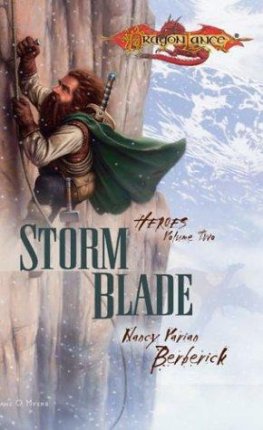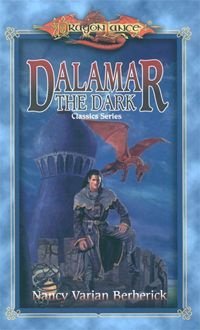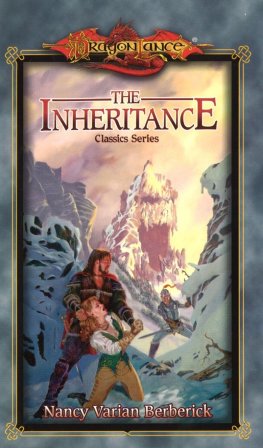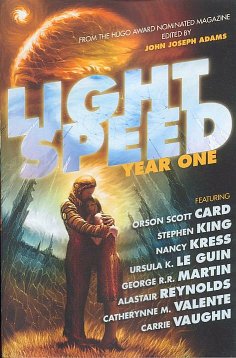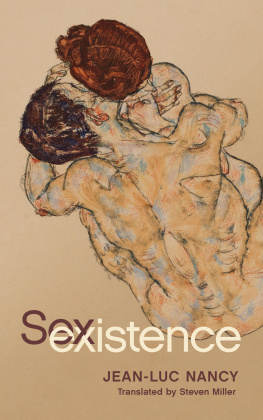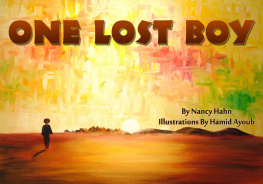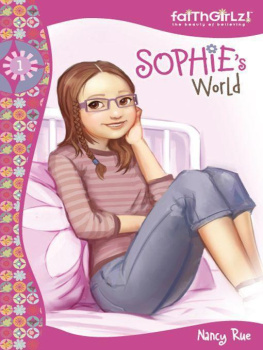Nancy Berberick - Stormblade
Here you can read online Nancy Berberick - Stormblade full text of the book (entire story) in english for free. Download pdf and epub, get meaning, cover and reviews about this ebook. year: 2004, publisher: Wizards of the Coast, genre: Romance novel. Description of the work, (preface) as well as reviews are available. Best literature library LitArk.com created for fans of good reading and offers a wide selection of genres:
Romance novel
Science fiction
Adventure
Detective
Science
History
Home and family
Prose
Art
Politics
Computer
Non-fiction
Religion
Business
Children
Humor
Choose a favorite category and find really read worthwhile books. Enjoy immersion in the world of imagination, feel the emotions of the characters or learn something new for yourself, make an fascinating discovery.
- Book:Stormblade
- Author:
- Publisher:Wizards of the Coast
- Genre:
- Year:2004
- ISBN:9780786931491
- Rating:3 / 5
- Favourites:Add to favourites
- Your mark:
- 60
- 1
- 2
- 3
- 4
- 5
Stormblade: summary, description and annotation
We offer to read an annotation, description, summary or preface (depends on what the author of the book "Stormblade" wrote himself). If you haven't found the necessary information about the book — write in the comments, we will try to find it.
Stormblade — read online for free the complete book (whole text) full work
Below is the text of the book, divided by pages. System saving the place of the last page read, allows you to conveniently read the book "Stormblade" online for free, without having to search again every time where you left off. Put a bookmark, and you can go to the page where you finished reading at any time.
Font size:
Interval:
Bookmark:
Nancy Varian Berberick
Stormblade
Astinuss Note
Historians call the years between 348 AC and 352 AC the War of the Lance. The naming has become popular among the peoples of Krynn. It was a time when the gods strove against each other, Good against Evil. Takhisis lent her dragons, dark creatures of death and fire, to her war leaders and called those leaders Highlords. Paladine and Mishakal chose to dispense their aid and grace to those fighting against the dragonarmies and the Dark Queen in other ways. Paladine walked for a time with the kender Tasslehoff Burrfoot and his companions. He was known to them as Fizban. Mishakal gave her learning and lore to one of the kenders companions, a Plainswoman who understood the meaning of faith, and who restored that faith to many in Krynn.
But these are the larger events of that war. Others are referred to in history only by a line.
One such line intrigues many who study history. It is found in the record of the year 348 AC: Nordmaar falls to the dragonarmy. The dwarves in Thorbardin forge a Kingsword and call it Stormblade.
There is only one other line that references the Kingsword, and it appears two years later: Lord Verminaards slaves escape from his mines at Pax Tharkas, aided by a group of companions, among whom are the kender Tasslehoff Burrfoot and the mage Fizban. Dwarven Kingsword located.
Between those two lines, and beyond them, lies a tale that may explain why, after carefully refraining from offering aid to those fighting against the Dark Queen, the dwarves of Thorbardin at last entered the War of the Lance.
How much of the tale is true history and how much embroidered legend, I am yet considering. Though much of it, I will say, has the ring of truth. For the rest, and that is only little, I offer this: In Thorbardin the dwarves say that legend is truth condensed, so that everyoneeven a gully dwarfcan understand it.
Prologue
As the bard hears, faint but clean, the elusive Melody and secret harmonies of the song he was given his voice to sing, as the storyteller knows, deep within his bones, the words and silences of the tale he was born to tell, so the dwarf Isarn Hammerfell knew that Stormblade was the reason he had come to swordcrafting. The sword would be his masterblade and stood, almost seen, behind every blade he made, waiting patiently for its birth.
It waited for Isarn Hammerfell to consider himself worthy. When this blade was forged, when it came from the fires and the cooling oils, to perfect balance and cold blue beauty, Isarn would offer it to his thane, to Hornfel of the Hylar.
If Hornfel judged it good, he would honor the mastersmith, as thanes have done for generations, by displaying the sword with masterblades generations old.
The blade once hung, Isarn would make no other sword. The forge at which hed labored for so many years would become the forge of his apprentice and young kinsman, Stanach Hammerfell. Isarn would lay down his hammer, his tongs, all the tools which he had known and loved for so many years, and gently finish his days in honor.
Because the forging of this blade would be his finest work, the embodiment of his vision and matchless skill, Isarn used none but the purest steel, newly fired from hard, black wrought iron created by his own hand.
He went to the mines himself, though he was a mastersmith and need not have chosen his own ore. He knew, and none knew better, the look of perfect ore, the feel of it, the bitter smell of it. He stalked the dark, lantern-lit iron mines searching the broad veins for the ore he knew would be the purest. There it was mined under his supervision.
None saw him for many days after he returned to his smithy at Thorbardin. Deep within the mountains heart he waited, designing Stormblade. Never once did he take ink to parchment, for the design was composed in his heart and in his soul. He knew what the sword would look like. His hands knew how it would feel. His ears already heard the song of hammer and anvil, fire and steam.
The ore was brought to him. All that remained was to find the right jewels for the swords decoration. The hilting of the sword would be the task of Isarns apprentice Stanach Hammerfell. It was the traditional sign of the masters trust in the one who would follow.
There are not only weapons crafters in Thorbardin, but jewelers, goldsmiths, and silversmiths as well. Isarn went among his companions, the masters of those crafts. From the master of the gemsmiths he received five flawless sapphires. Four were the color of the sky at twilight; and the fifth was the pure, deep blue of midnight and deeply starred. These would decorate the blades grip. The finest gold was found for the blades hilt, and a lustrous silver to chase it.
The sword conceived, it was now ready to be born. Isarn Hammerfell, assisted by only his apprentice, began to create his masterwork. Isarn and Stanach built the furnace fire themselves. They filled the two troughs, one for the water to cool the wrought iron, one for the oil to cool the steel. Stanach pumped the bellows with the slow, steady rhythm Isarn had taught him. Coaxing the fire, Stanach watched the orange light slide up the smooth stone walls of the forge. This was a task he had not been required to perform since the first, fumbling days of his apprenticeship. How familiar this task was now. Yet, how different!
None but he and his master Isarn would see Stormblade born, and Stanach knew that he would never again feel the magic of crafting so intensely until, years from now, he gave life to the unimaginable vision of his own masterblade.
Steel is made from the elements of the world. Dug first as ore, it is shaped through the agencies of fire and water into wrought iron. Stanach watched now as Isarn made the thick, dark iron. Each of his masters moves was careful and considered. Isarn, who had a thousand times before made his iron with the unthinking skill of one whose hands move almost without will, took each step of the making as carefully now as any apprentice first permitted to approach a forge.
Stanach watched his master as though seeing him perform the task for the first time. I will remember this, he thought. The forge fire pulled the sweat from him. He wiped his face with the back of his hand, his eyes on Isarn. Always, I will remember this.
And always, he thought as the ore came from the forge, he would remember the look in Isarns eyes. It was the look of one who loved and saw nothing but the thing he loved.
They were silent while the iron cooled. Nothing needed to be said. Stanach had no questions. Isarn had nothing but the bond between his soul and the elements. When the iron was finally cool and hard, a rough black mass, Isarn placed it in a clay container, itself earthborn and still remembering the kiss of flame.
Stanach lifted the vessel, heavy with charcoal dust and iron, and placed it in the furnace exactly where his master directed. Sweat ran ceaselessly down his face now, soaking his thick black beard. His hair clung to his neck. He had long ago abandoned his loose forgemans shirt for a leather apron. His thickly muscled arms gleamed with a golden reflection of flame.
The heat of the furnace sought to mimic that of the fires said to burn ceaselessly in Krynns heart. In this terrible heat the charcoal dust combined with the surface of the wrought iron to create a hard, gleaming sheath: steel.
Stanach dragged a bucket of water from the farthest corner of the forge. Cool hours before, the water was now warm, as though it had been lying in the sun. He ladled a drink for Isarn, and then another for himself. In their parched throats it tasted like wine.
Stanach drew another ladle from the bucket and poured it over his head. It ran hot down his neck and back, and he felt suddenly sad. For the first time since theyd come into the forge, Stanach remembered that when Stormblade was finally more than a vision, he and Isarn would no longer work side by side.
Font size:
Interval:
Bookmark:
Similar books «Stormblade»
Look at similar books to Stormblade. We have selected literature similar in name and meaning in the hope of providing readers with more options to find new, interesting, not yet read works.
Discussion, reviews of the book Stormblade and just readers' own opinions. Leave your comments, write what you think about the work, its meaning or the main characters. Specify what exactly you liked and what you didn't like, and why you think so.

